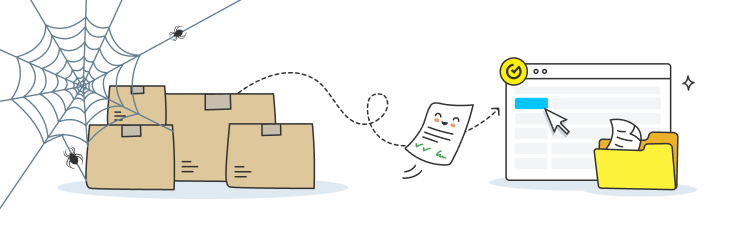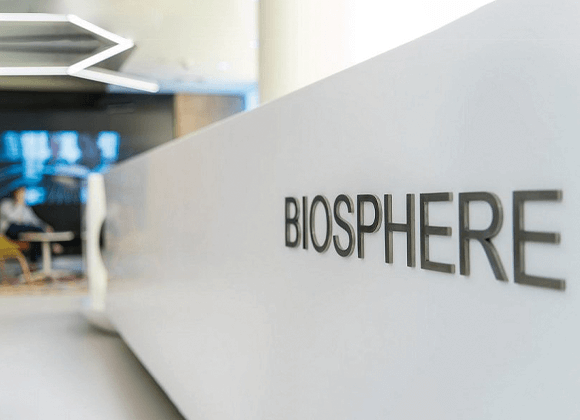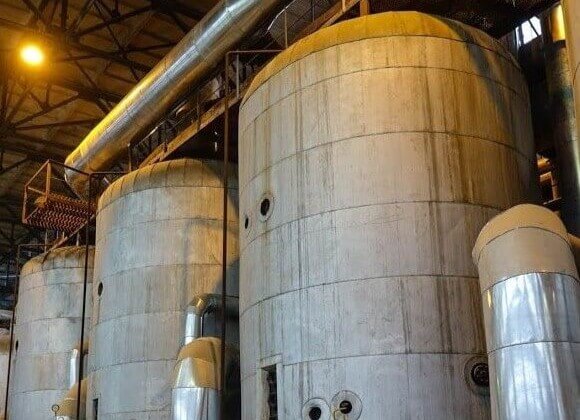
When did the company start using ODE?
We started exchanging electronic documents with our partners in 2015. However, at that time, the exchange of electronic documents was not widespread, so most of our partners preferred to work with paper documents. In 2021, we decided to fully switch to ODE.

We have converted into electronic format those documents that we generate ourselves. These documents include
- external documents such as invoices, bills of lading, certificates of work performed, reconciliation statements, letters, agreements, annexes to agreements, contracts
- internal documents such as orders and vacation requests, time sheets, employee schedules, write-off statements, documents related to fixed assets (commissioning, relocation, write-off).
We are currently working on the conversion of documents generated by suppliers.
Which challenges we encountered during the implementation of electronic document workflow?
Process automation and integration of Vchasno with the company’s internal systems
It was rather complicated and required a lot of effort. The company invested time and money in developing personal capabilities for integrating the service into the company’s own systems. And we continue to do it, because we understand the advantages of digitalization and want to increase the efficiency of electronic document flow.

Document roaming
Implementing ODE requires synchronization of processes between companies at the stage of data exchange. Unfortunately, there is no exchange of documents between different electronic document platforms (document roaming) in electronic document workflow. This means that if a document is created on the Vchasno platform, the partner will be able to see and sign it only in Vchasno. Certainly, both we and our partners want to use only one platform for all our documents.
However, at the moment, roaming between systems is not implemented in any EDO provider, so this issue remains open not only in Vchasno. Each provider uses different technical solutions in their service, so this also makes it impossible to build roaming at this stage.
The opposition of partners
While our employees quickly realized the benefits of electronic document workflow and easily adapted to the innovation, introducing ODE caused inconvenience for our partners. Therefore, we had to communicate a lot with our partners, explain the benefits of ODE and provide support throughout its implementation.
We divide our partners into two categories: customers and suppliers.
It was relatively easy to implement ODE for our customers because we generate documents for them ourselves. We notified our customers in advance that we would be switching to electronic document workflow at Vchasno and warned them that from now on we would sign documents only in this service. So, if they want to purchase our products, they must be registered with Vchasno.
As we were among the first companies that began working with electronic documents, Vchasno became the main electronic document workflow platform for most of our customers. They quickly realized how convenient it was.
This is a more complicated process for suppliers. Some of them work in a different system, and therefore refuse to send a document to Vchasno. In this case, roaming would solve this issue.
What problems does ODE implementation solve and what are the benefits for the company?
-
1E-documents are easy to work withIn Vchasno, it is possible for all employees to access documents simultaneously. E-documents can be easily found, stored, and processed.
-
2It's faster to work with e-documents.ODE allows you to instantly transfer, sign and process documents in electronic form. It allows you to speed up business processes, avoid delays, and improve interaction between the parties. Also, there is no need to spend time migrating documents within the company and stamping them.
-
3It reduces costs.The use of electronic document workflow contributes to reducing the company's costs, as the cost of electronic documents is lower than the cost of postal services.
-
4It has environmental benefitssuch as saving paper, saving energy, and reducing emissions. Using electronic documents avoids the large amount of paper commonly used for printing. This can lead to reduced deforestation and lower costs for paper production and disposal. By reducing the number of paper documents you need to print and store, you also reduce the energy used to run printers and copiers.
-
5Reduce the negative impact on the environment.The production of paper and its later processing can lead to air emissions and water pollution. Minimizing the use of paper helps to reduce the negative impact on the environment.
Along with the above-mentioned advantages of ODE, we can add automatic document processing in the ODE system, which helps to avoid errors that may occur during manual document workflow. Another feature of the ODE is that employees have access to electronic documents from any location, which is particularly beneficial when working remotely.
When your country is under full-scale invasion, exchanging documents electronically is much more convenient and, most importantly, safer. When the country is at war, it may be impossible to get a document in paper form.
Vchasno.Kasa implementation outcomes

Get more information about Vchasno
Contact us! Learn how to quickly implement e-document workflow in your company and reduce costs and team time for documents processing.









